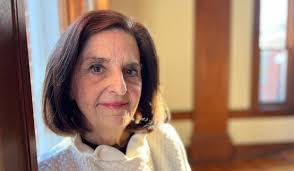On June 30, 2014, President Kent Chabotar’s current contract comes to an end. Whether Chabotar and the Board of Trustees decide to continue his tenure as president beyond that date is unknown. However, it is likely that Chabotar’s presidency, which began in 2002, has more years behind it than ahead.
In any case, Walter Blass, a 37-year member of the Board of Trustees, said that there is shelf life for any president, averaging about four years at a public university and seven years at a private college.
The Guilfordian is assessing the last 10 years of Chabotar’s tenure as president.
Chabotar was chosen by the Board of Trustees during an exhaustive process to save Guilford College from a downward financial spiral.
Vic Cochran, former trustee, said that the board was looking for someone who knew how to save a college in financial trouble.
“Thinking back to the time when the Board found Kent, we were not looking for someone to build a brand for the College,” said Cochran. “We were trying to find someone who would turn the college around. Kent had done wonders over at Bowdoin.”
Chabotar served as Bowdoin College’s chief financial officer for 11 years prior to coming to Guilford.
Working with a faculty-led budget committee similar to Guilford’s, Kent had fixed a budget suffering from excessive endowment spending.
“I have heard people complain about this or that, but when I ask them if Kent did his job — the job we brought him to the college to do — they say yes,” said Cochran. “Look at how many schools went out of business in the past 10 years.”
According to excerpts from a confidential Harvard case study obtained by The Guilfordian, Guilford was heading into certain financial ruin around the time Chabotar arrived.
In fact, Chabotar turned down the presidency the first time it was offered to him because he feared that the College was too far-gone.
The College was spending 13.5 percent of its endowment when most other colleges spend only 5 percent. Additionally, the revised budget had an operating deficit of $3.4 million.
Despite seven attempts in 10 years, Guilford still lacked a formal strategic plan.
Furthermore, the College’s total debt had jumped from $11.7 million in Fiscal Year 95‐96 to $29.3 million in FY 01‐02, according to the report.
The report also said that Guilford’s academic program lacked focus.
“Academic offerings had grown to include so many different majors and concentrations that, technically, each program averaged less than one faculty member after dividing the number of programs by full-time equivalent (FTE) faculty,” said the report.
Campus buildings and grounds were also noticeably suffering.
“Everywhere we went, we saw peeling paint, chipped concrete and cracked windows,” said Chabotar. “There was even ‘crime scene tape’ in front of the library to warn pedestrians to stay away because of the danger of falling debris from building columns and the roof.”
Cochran told The Guilfordian that buildings and grounds have changed for the better with Chabotar at the helm.
During the last decade, Chabotar let data guide the College because he believes that “some folks do not let the facts get in the way of their biases.”
This has caused some, like Professor of Mathematics Elwood Parker, to question his management style.
“His reliance on reports and raw numbers is what most disturbs me,” said Parker. “There are often compelling reasons why an underrepresented department does not seem to do well in, lets say, the recent prioritization, and under Kent’s presidency those concerns go unnoted.”
Cochran noted that management styles such as Kent’s management style is very hands on, which differs from most administrators in his position.
“Kent likes to go out with the gardeners and pull the weeds sometimes,” said Cochran. “Sometimes that makes people a little uncomfortable.”
Additionally, Adrienne Israel, vice president and academic dean, said that Chabotar has developed and adapted to Guilford over time, especially in adjusting to the Quaker process and consensus.
“It was overwhelming for Kent to go into meetings with his ideas 10 years ago,” said Israel. “Kent misunderstood passionate conversations about a given topic to be the end of a successful idea, and he was mistaken. Kent, in turn, has taught me how to be a better leader by his example.”
Chabotar told The Guilfordian that besides balancing the budget and fixing the campus, Guilford needed a long-range strategic plan to ensure its survival.
“The college went from monumental deficits to turning profits,” said Blass. “Buildings and grounds were restored and beautified over the past decade. Enrollment and students of color have become more robust.”
The strategic plan measures Guilford’s progress with data-driven indicators. Among them are criteria such as total funds raised, percentage of people of color among the faculty and students, student-to-faculty ratios and graduation rates.
Chabotar knew turning the College around would take time, but he underestimated just how long he would stay.
“I thought I’d be here five years,” said Chabotar. “I thought that’s how long it would take to right the ship. The ship got righted. I fell in love with the south, the culture, the people, and five years became 11.”
“I also felt a responsibility to the College not to leave until we were in a good place. A college president should have a good reason to stay for less than five and more than 10 years. You better have some things you want to accomplish and not just be treading water.”
“Right now, that includes finishing a capital campaign, implementing our second strategic plan and working with faculty and others on principled problem solving, experiential education, study abroad, and other initiatives important for students, such as the January Term. After I leave the presidency, I plan to stay at Guilford as a professor of political science.”
Next week The Guilfordian will assess how Guilford’s finances, fund-raising, diversity, facilities, academics and strategy compare to other private colleges during Chabotar’s presidency. Stay tuned.






